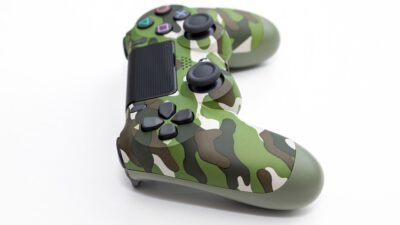In the world of competitive gaming and extended play sessions, selecting the right gaming chair can be just as crucial as mastering the latest strategies or honing reflexes. While many gamers might focus on aesthetics or brand cachet, the true success of a gaming chair lies in its design—specifically crafted to enhance comfort, support, and performance. This article delves into the behind-the-scenes processes that go into designing gaming chairs for maximum performance.
Ergonomics: The Foundation of Design
The heart of any high-quality gaming chair is its ergonomic design. Ergonomics is the study of how humans interact with their environment, especially in terms of improving efficiency and comfort. Gaming chairs are engineered to minimize fatigue and discomfort during long sessions. Key ergonomic features include:
-
Lumbar Support: Many chairs incorporate adjustable lumbar support to maintain natural spinal curvature. Proper lumbar support reduces the risk of back pain and promotes healthy posture.
-
Height Adjustability: A gaming chair should accommodate a range of body types and desk heights. Hydraulic lifts allow for seamless height adjustments to ensure that gamers can sit at an optimal eye level with their monitors.
- Tilt Mechanism: A good gaming chair allows users to recline, helping to shift pressure and avoid stiffness. High-quality tilt mechanisms enable smooth transitions between upright and reclined positions.
Materials Matter
When it comes to both performance and longevity, materials play a critical role. Manufacturers typically choose high-density foam for padding, which strikes a balance between comfort and durability. The chair’s upholstery can range from breathable mesh to synthetic leather, each offering unique benefits:
- Mesh: Provides excellent airflow and is lightweight, making it suitable for long gaming marathons, particularly in warmer environments.
- Synthetic Leather: Offers a premium look and easy cleaning, but can sometimes lead to heat buildup over time.
Additionally, the frame materials (often steel or reinforced plastic) are selected for their ability to bear weight while maintaining structural integrity. This ensures the chair can withstand intensive use over the years.
Testing and Prototyping
The design process doesn’t stop with sketches and materials. Gaming chair manufacturers engage in rigorous prototyping and testing phases to refine their products. This can involve:
- User Studies: Target users, often professional gamers or enthusiasts, test prototypes to provide feedback on comfort, adaptability, and features.
- Stress Testing: Chairs are subjected to various weights and rigorous movements to ensure they meet safety and performance standards.
- Adjusting Design: Based on feedback and testing results, designers make iterative adjustments, often producing several prototypes before settling on a final product.
Aesthetic Design and Branding
While comfort and functionality are paramount, aesthetics also play a significant role in the appeal of gaming chairs. The gaming community is visually driven, with many gamers preferring chairs that reflect their personal style or match their gaming setups. Designers consider:
- Color Schemes: Bright colors and dynamic patterns can resonate with younger audiences, while sleek black or white models may attract a more professional, mature market.
- Branding: Many gaming chair companies collaborate with esports teams or gaming influencers to create limited-edition designs that carry prestige within the community.
Innovation: The Future of Gaming Chairs
As the gaming landscape evolves, so too do the technologies incorporated into gaming chairs. Emerging trends include:
- Smart Features: Some of the latest models incorporate smart technology—integrating features such as built-in speakers, vibration feedback, or even climate control systems.
- Sustainable Materials: As environmental awareness grows, manufacturers are beginning to explore eco-friendly materials that provide performance without compromising on sustainability.
Conclusion
Designing a gaming chair is a complex endeavor that requires a harmonious blend of ergonomics, material science, testing, and aesthetics. As gaming continues to become more immersive and competitive, the importance of having a well-designed gaming chair cannot be overstated. By understanding the meticulous processes that go into their creation, gamers can make informed choices that not only enhance their gameplay experience but also promote their long-term health and comfort. Whether you’re a casual player or a seasoned pro, investing in a high-performance gaming chair can make all the difference in your gaming journey.



